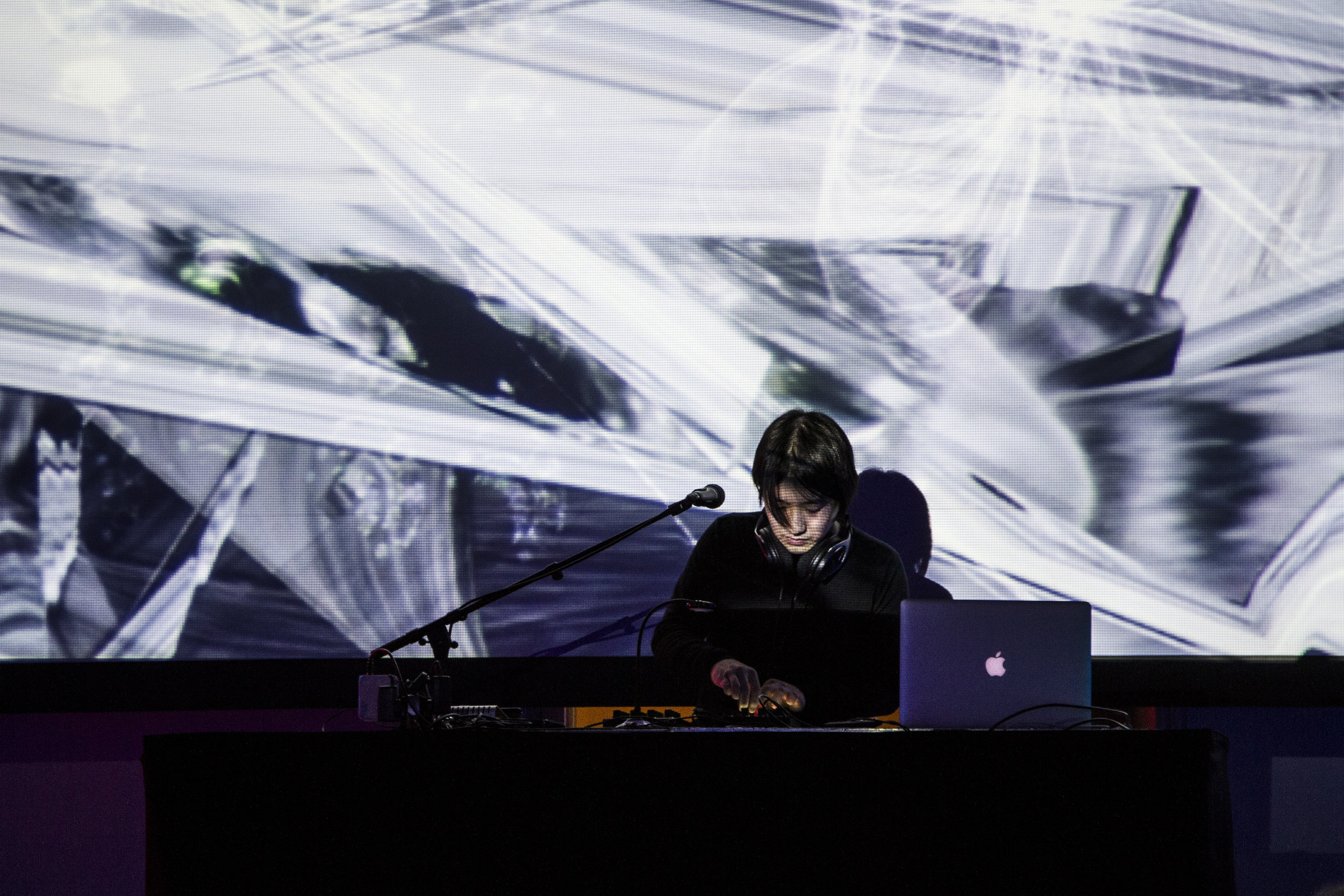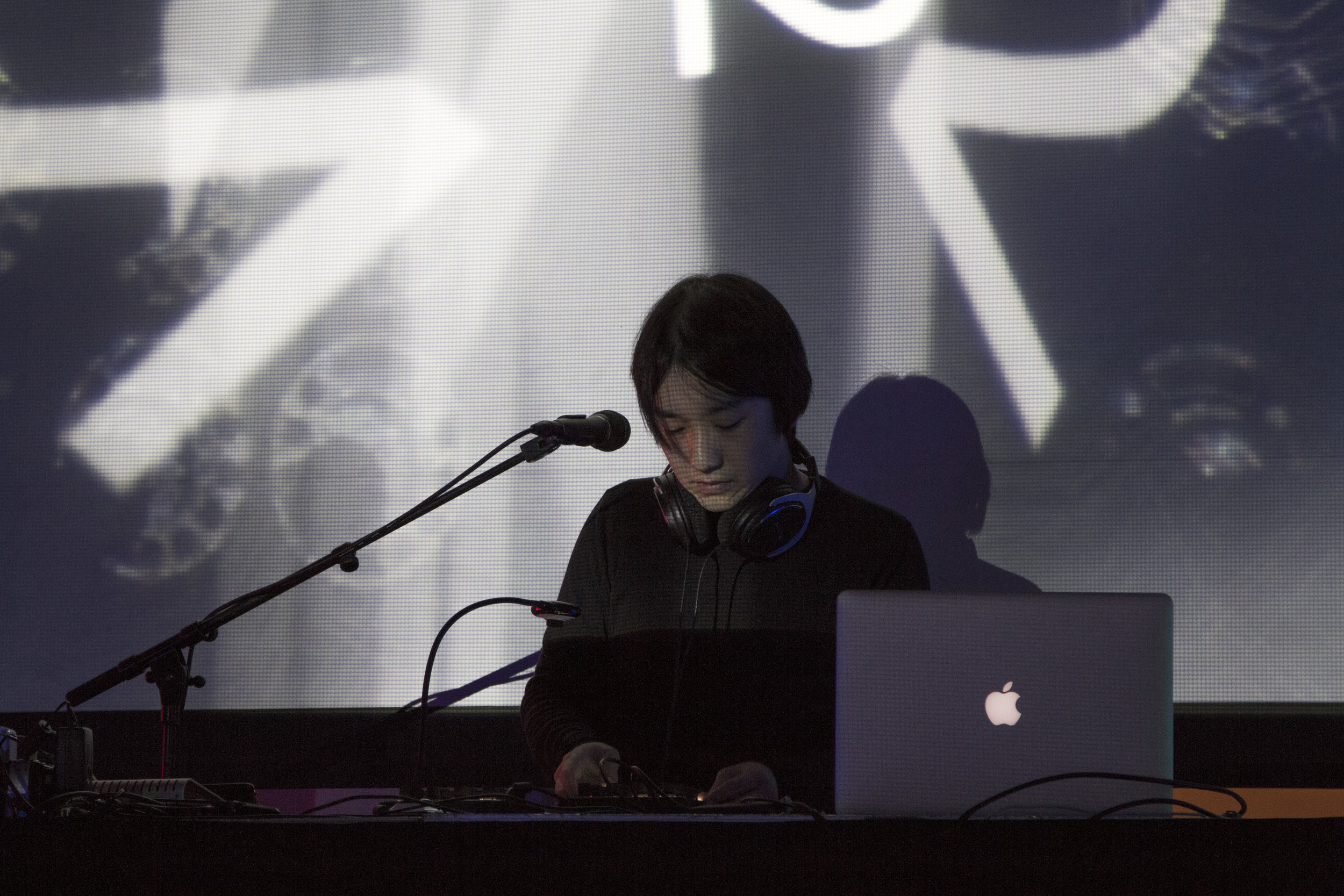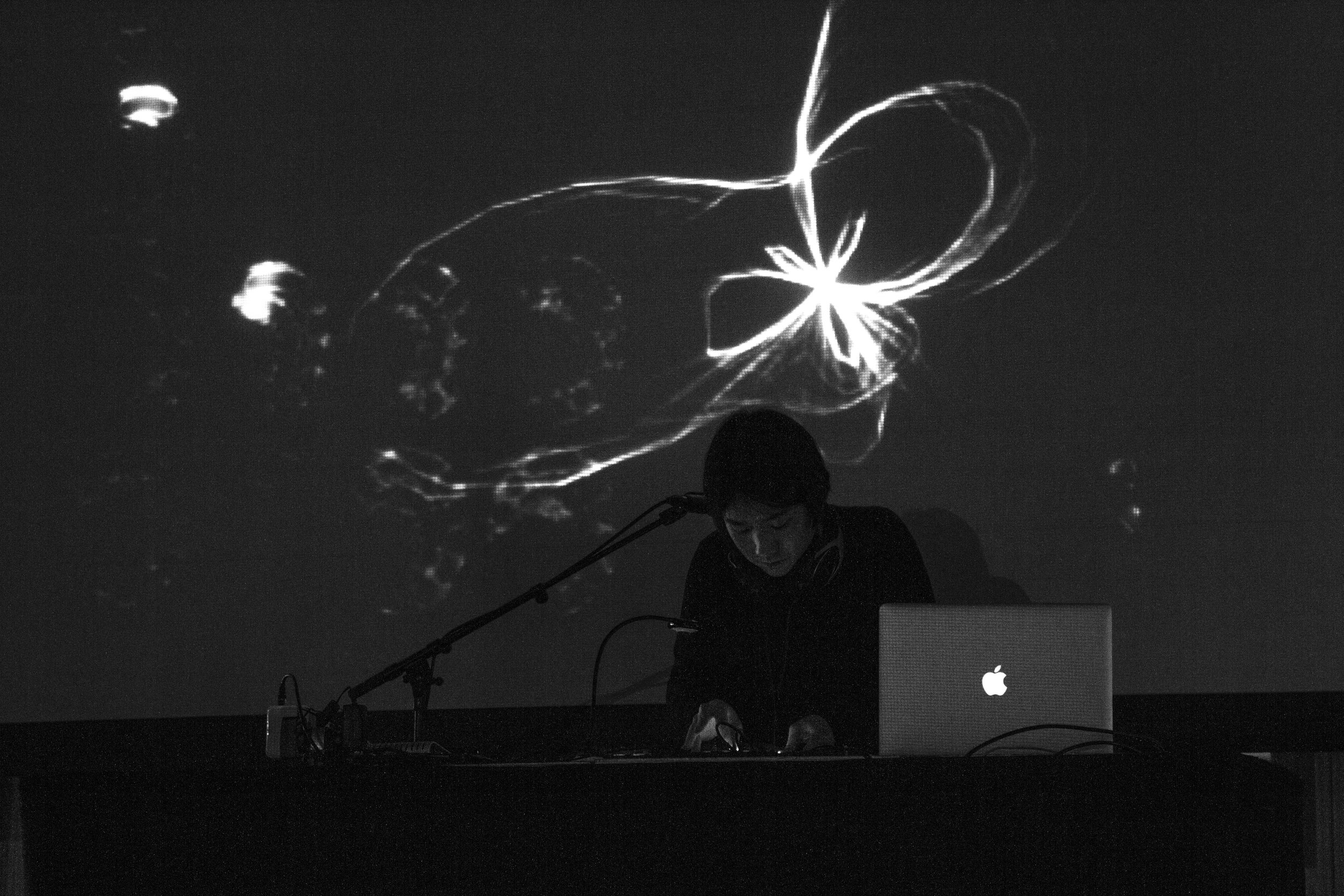....
Physical Fluidifying
audiovisual digital music improvisation
2017-
..
Physical Fluidifying
オーディオビジュアルデジタルミュージック即興パフォーマンス
2017年-
....



....
Seeking another approach to music performance – neither the traditional DJ set nor a live band performance – this work experiments with the two key themes. The first focus is the physical presence of a performer in digital music performance. The second one is fluidifying the fixed nature of digital audio files during performance. The performance system consists of the visuals which are generated from Kakinoki's musical movements in real-time, and the improvisation which deconstructs/reconstructs Kakinoki's musical pieces. The aim of the design of this performance was to enhance the visibility without violating the audience’s auditory imagination unnecessarily, and to enhance the fluidity without relinquishing the unique fixed nature of digital music.
With this performance system, digital music pieces can be ‘performed’ with maximised liveness. The performer can fluidify any fixed recording to any desired extent manually with her/his hands. The presence of the performer’s spontaneous physical actions is delivered to the audience without deteriorating their auditory imagination unnecessarily. These two core aspects of the design are the considered attempts to respond to Simon Emmerson’s working definition of 'live', from the field of digital music performance: the presence of a human performer: who takes decisions and/or makes actions during a performance which change the real sounding nature of the music (Emmerson, 2007, p. 90).
The performance system consists of an audio engine, control mapping engine and visual engine. The audio engine and the control mapping engine were programmed with Cycling ‘74 Max. They let the performer deconstruct and reconstruct pre-recorded audio files with her/his hands via MIDI controllers during performance. The visual engine was programmed with Derivative TouchDesigner. In various ways, it visualises and exaggerates the performer’s actions which cause sonic changes, and filters out the rest.
This work was born from questioning the medium specificity of digital music performance. Attempts to imitate the performance formats of how popular musicians (such as rock bands or vinyl DJs) reproduce the production process of their music on stage could be considered regressive. Instead, perhaps, digital musicians should keep asking the question of what the nature of digital music performance is.
..
デジタルミュージックパフォーマンスにおける演奏者の肉体的存在感を提示すること、デジタルオーディオファイルの固定的性質を演奏中に解体していくこと、という2つを主要なテーマとする。Kakinokiの音楽的身体動作から生成される映像と、Kakinokiの音楽作品を解体/再構築する即興演奏を構成要素とする。 このパフォーマンスは、デジタルミュージック作品の演奏における「ライブ性」を最大化させることを目的としている。演奏者は彼自身の手によって、固定化された録音物を任意のレベ ルに解体することができる。演奏者の突発的な身体動作の存在感は、鑑賞者の聴覚による 想像の産物を不必要に損ねることなく、鑑賞者に届けられる。この2点は、サイモン・エマーソンのデジタルミュージックパフォーマンスにおける「ライブ」の定義に応答したものである。
決定と行動を演奏中に行い、音楽における実際の音響的特徴を変化させる演奏者の存在感(エマーソン、2007)
デジタルミュージックパフォーマンスの性質への問いから生まれた作品である。
....
....
It has been performed at Cafe OTO (London), Tallinn Music Week (Tallinn), ArtReview (London) and DOMMUNE (Tokyo).
Technical rider: audiovisual (diagram) / audio-only
..
Cafe OTO(ロンドン)、 Tallinn Music Week (エストニア、タリン)、ArtReview (ロンドン)、DOMMUNE(東京)などで披露された。
テクニカルライダー: オーディオビジュアル(図) / オーディオのみ
Maxパッチ、 TouchDesignerプロジェクトファイル、 MDI Fighter Twister設定ファイル
....